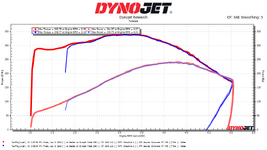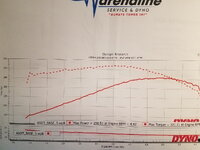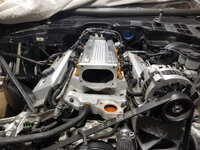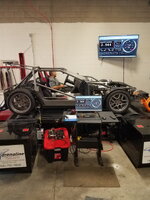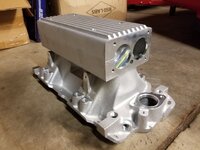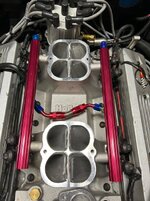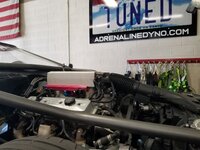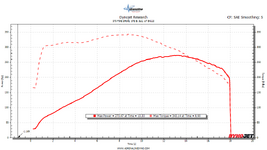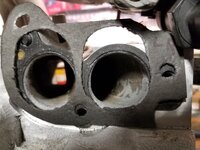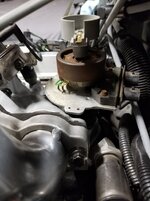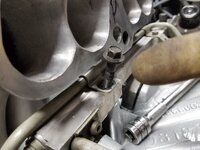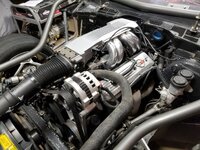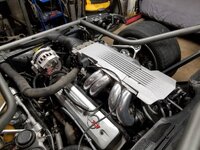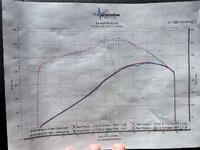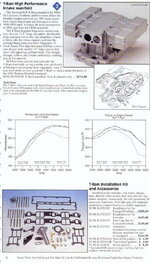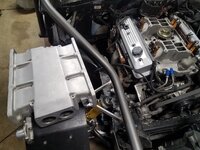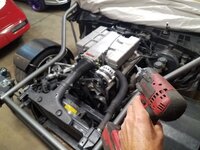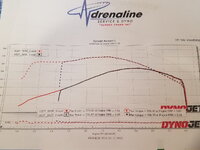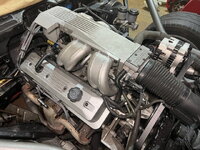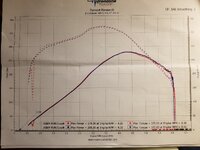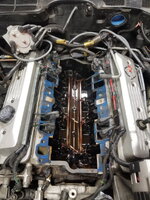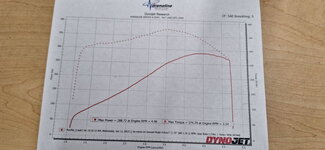Tom400CFI
Member
C4 owners....you're getting it all here, first, on VetteMod!
I'm sure that every C4 owner has seen the famous "Ten Times the Torque" article, done by Richard Holdner (see attachment). He did a VIDEO RECAP of the article a few years ago on his YT channel. Freiburger did a similar test also, I believe, in the '90's. These test/articles became fodder for all of us, and established a hierachy of available intake options for TPI and how each/all of them ranked. None of us know squat back then, EFI was rather new, tuning was not readily available....so ALL of us wanted to know which of these new-fangled EFI intakes really worked on a TPI car. These articles shed some much needed light on the matter and became the "holy grail" of TPI intake info. The only problem was...all of the available test then, up through now, were done on "500 hp" motors. Holdner had planned on doing the test on a medium 350, but that engine blew before testing began (I have read), and they had to shift to using a fairly radical 383 to test the intakes on. Freiburger's test used a similar 383. The data is good, but it's probably not aligned with what most C4 owners have when they buy an intake, and it's certainly not the motor most of us had in the '90's when we were in early stages of learning EFI, intakes and mods....all w/basically no tuning. Maybe a Vortech FMU!
With this in mind, and a stock L98 at my disposal (in my '89 "Vette Kart"), I embarked on some dyno testing which has evolved into essentially re-testing most of the intakes from "10x the tork"...but doing it on a stock engine. At the onset of the testing, I expected gains from all of the intakes over stock. I expected the order of "winners" to be different than on the old big-engine tests....I expected my testing to favor the lower performing intakes from the original tests.
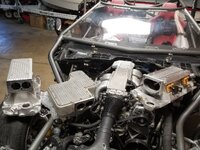

The test mule:
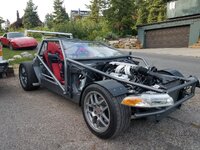
The car (Kart) is...was an '89 Corvette, Z51, 6 speed. The engine was bone-box stock except for the following:
True dual exhaust, no cats, bullet muffs
Under drive pulleys
No air filter
160 stat
It was in that configuration for all intakes/tests, and base timing and fuel pressure were adjusted to optimize results for each intake. ECM/"Tune" was not touched for any intake. This was simply an intake R&R and fuel pressure and timing adjustments....pretty much like we'd all have done back in the day.
All pulls were done on the same chassis dyno, I requested all pulls start "at idle", or ~500 RPM so we could see the WHOLE tq curve. I hate pulls that start at 4000 RPM...what is that? Anyway, due to the coordination of the dyno op running the car, the dyno etc. none of the pulls actually "hit" until about 12-1500 RPM, so that is what you'll see in the graphs, but they DO give a darn good look at "low end torque" for each intake. I had the op shut it down "before 6000 RPM" on all test because there were zero intakes that would make any power that high, on this stock engine. No point.
With all of that covered.....how'd they all do?
I'm sure that every C4 owner has seen the famous "Ten Times the Torque" article, done by Richard Holdner (see attachment). He did a VIDEO RECAP of the article a few years ago on his YT channel. Freiburger did a similar test also, I believe, in the '90's. These test/articles became fodder for all of us, and established a hierachy of available intake options for TPI and how each/all of them ranked. None of us know squat back then, EFI was rather new, tuning was not readily available....so ALL of us wanted to know which of these new-fangled EFI intakes really worked on a TPI car. These articles shed some much needed light on the matter and became the "holy grail" of TPI intake info. The only problem was...all of the available test then, up through now, were done on "500 hp" motors. Holdner had planned on doing the test on a medium 350, but that engine blew before testing began (I have read), and they had to shift to using a fairly radical 383 to test the intakes on. Freiburger's test used a similar 383. The data is good, but it's probably not aligned with what most C4 owners have when they buy an intake, and it's certainly not the motor most of us had in the '90's when we were in early stages of learning EFI, intakes and mods....all w/basically no tuning. Maybe a Vortech FMU!
With this in mind, and a stock L98 at my disposal (in my '89 "Vette Kart"), I embarked on some dyno testing which has evolved into essentially re-testing most of the intakes from "10x the tork"...but doing it on a stock engine. At the onset of the testing, I expected gains from all of the intakes over stock. I expected the order of "winners" to be different than on the old big-engine tests....I expected my testing to favor the lower performing intakes from the original tests.


The test mule:

The car (Kart) is...was an '89 Corvette, Z51, 6 speed. The engine was bone-box stock except for the following:
True dual exhaust, no cats, bullet muffs
Under drive pulleys
No air filter
160 stat
It was in that configuration for all intakes/tests, and base timing and fuel pressure were adjusted to optimize results for each intake. ECM/"Tune" was not touched for any intake. This was simply an intake R&R and fuel pressure and timing adjustments....pretty much like we'd all have done back in the day.
All pulls were done on the same chassis dyno, I requested all pulls start "at idle", or ~500 RPM so we could see the WHOLE tq curve. I hate pulls that start at 4000 RPM...what is that? Anyway, due to the coordination of the dyno op running the car, the dyno etc. none of the pulls actually "hit" until about 12-1500 RPM, so that is what you'll see in the graphs, but they DO give a darn good look at "low end torque" for each intake. I had the op shut it down "before 6000 RPM" on all test because there were zero intakes that would make any power that high, on this stock engine. No point.
With all of that covered.....how'd they all do?
Attachments
Last edited:

